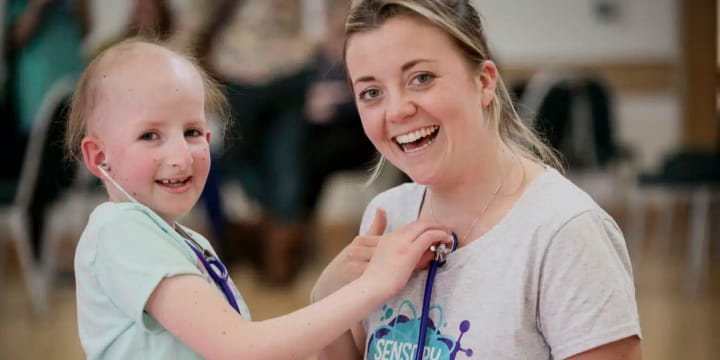Collaboration
Almost all innovations in science, technology, engineering and maths are built on connections between people; two (or more) heads are better than one! This is particularly true for experiments probing the boundaries of fundamental physics, which can only be realised by international collaborations like the Large Hadron Collider at CERN and the LIGO Scientific Collaboration.
However, even when working within the community of a large collaboration, it can be easy to feel like an outsider when activities that other people take for granted are not straightforward for you. Consider, for example, the physical access to a building. In my experience of working in several universities and research institutions with a physical disability, there are both obvious and less obvious ways in which the experience of wheelchair users can be very different from others using a particular building. For example, it is quite common to have a university site that is not exactly set up for people who don’t do stairs. Even if the building does have adaptations such as a lift, sometimes my access was still restricted if I couldn’t operate the lift independently. Thus, I sometimes found myself at a substantial disadvantage when it came to collaborating with my colleagues who work in the building. We also need to acknowledge the role of informal conversations in social spaces in scientific collaboration. If these are not wheelchair accessible, I found I could either ask colleagues to change their plans or not join them, which can lead to one not being thought of as part of the group.

Underrepresentation of disabled people
Unfortunately, it is often the case that as the group of people affected by these problems is so small universities and research institutions are not incentivised to make the necessary adaptations. Scientific institutions are often (and correctly) perceived as highly competitive in an environment that can seem unwelcoming and unaccommodating. This reputation contributes to the underrepresentation of disabled people within these disciplines and can deter young people from considering scientific careers. People with significant physical disabilities are also disadvantaged in physics if they do not receive enough support at the beginning of their education to pursue their interests. This is a situation that we at the Lightyear Foundation would like to change this British Science Week.
One way of tackling this underrepresentation is to create opportunities for young people to envision themselves pursuing their interests in physics. This is the motivation for the Lightyear Foundation Role Model program. In partnership with Future First and the Planet Possibility Consortium, the Lightyear Foundation is profiling the lives and careers of disabled physicists, increasing their visibility so that they can be role models for the next generation. In these profiles, we will find out firsthand the inside scoop about working in physics, from their top tips for starting out on a physics career to their ambitions for the future. We want to celebrate diversity within the physics community to help inspire disabled children to realise their potential.
Role Models
Some people could think that a person has to be at the pinnacle of their field to be a role model, but this is not the case. A role model is someone who has broken down barriers to get where they are, no matter the perceived size or scale of their journey or achievements. Thinking specifically about role models in physics, they could be at any point in their career, from a first-year undergraduate student embarking on the beginning of their course to someone at the peak of their career. In order to identify someone as a role model, this also implies that they have a degree of visibility.
If the community of disabled scientists had more visibility through the existence of prominent role models, universities and research institutions would be encouraged to make adaptations that break down barriers such as the ones I have described. Furthermore, future generations would then recognise these institutions as welcoming workplaces that are accommodating to the whole range of disabilities, since data shows that if one minority group is well supported there is a greater chance that they all are. Conversely, in my experience, if a culture of a workplace is perceived to be hostile towards a particular minority, there can be a temptation for people who are members of other minority groups to conceal their identity, which has many adverse effects on their work and personal satisfaction. I don’t think this is a situation that any of us want to perpetuate.
This is why we at Lightyear Foundation are encouraging you to share your stories of working in physics with a disability. For more information on this exciting project please see our launch article or contact me at claire@lightyearfoundation.org
After all, you can’t be what you can’t see!
